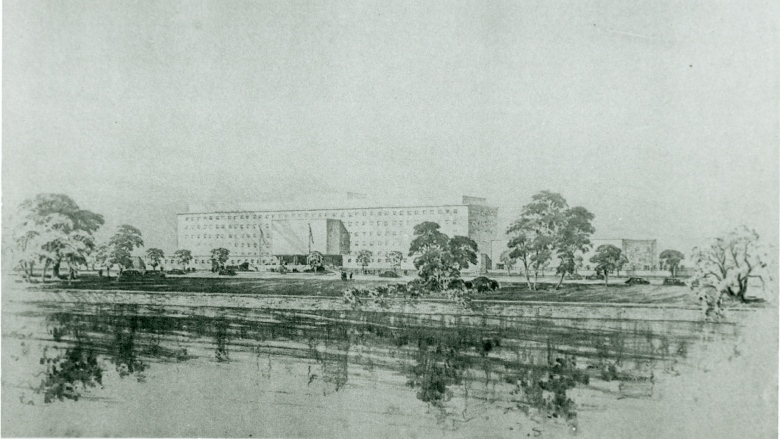
Ever since the World Bank opened for business on June 25, 1946 the address of its headquarters has been 1818 H Street N.W., Washington, D.C. During the first Board of Governors meeting in Savannah, Georgia, in March 1946, the city of Washington was chosen as the future site of the World Bank. John Maynard Keynes of the British delegation had argued strenuously for New York, but the Americans insisted on Washington and carried the day.
As it happened, a survey of downtown Washington was made to locate satisfactory quarters for the Bank and the Fund prior to May 1, 1946. The results of this survey showed that the 1818 H Street building (what became the A building in the Old Main Complex) contained the most satisfactory space that could be made available. The building had originally been constructed in 1941 for the U.S. Surgeon General, and in 1946 it was occupied by offices of the U.S. State Department.
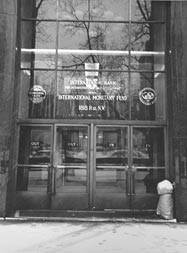
However, as time went on, it became clear that the building at 1818 H Street would not be sufficiently large to accommodate anticipated future growth of the Bank and the Fund. In the December 1986 issue of The Caravan, the newsletter of the Fund’s retirees, Albert S. Gerstein and Phillip Thorson tell the story of a search for alternative accommodations, in which they were both involved. According to the article, the managements of the Bank and Fund established a Joint Committee on Bank and Fund Building to study the question and to make recommendations.
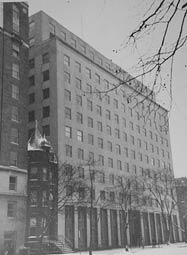
As described in the proposal prepared in August 1950 by the Public Buildings Service (PBS), "The proposed site is located at 27th Street and New Hampshire Avenue, N. W., a particularly beautiful part of Washington. Nearby are the Titanic Memorial, the memorial to Abraham Lincoln, and the Arlington Memorial Bridge spanning the Potomac River. To the west, across Georgetown Channel, is Theodore Roosevelt Island, which will be developed; and it is expected a monument to that President will be erected there at some future date. The entire area is quite open, with pleasing vistas in several directions, and a wide view of the Potomac River and the Virginia shore line.
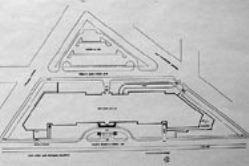
In early 1950 the Committee approached the owner of the site and was eventually told that it could be purchased for $1.9 million. The Joint Committee recommended to the managements that such a price should be given serious consideration. In addition, the U.S. Government—as the government of the host country—was consulted, and had no objections.
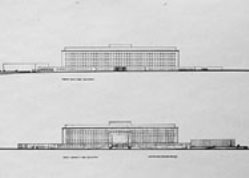
In its description of the proposed building the PBS wrote, "Inasmuch as there are two distinct organizations, the Fund and the Bank, conducting business in the one structure, it was decided to divide the building vertically rather than horizontally. A central lobby will provide access for passenger elevators, and other means of communication, between the two separate but inter-related organizations."
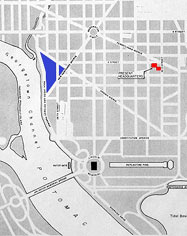
According to The Caravan article, the managements of the Bank and the Fund reviewed the PBS proposal and suggested some reworking. The main reason, as reported to the Joint Committee, was that the management of the Bank in particular wanted to avoid any semblance of a "monumental" structure. The PBS then submitted designs for a somewhat smaller structure costing $4 million less.
In March 1951, the Joint Committee prepared a "Report on Bank and Fund Building" and submitted it to the two managements. It recommended proceeding with the construction of the new headquarters along the lines of the PBS proposal. The report noted the effect on the Korean War (which had begun in 1950) on the availability of steel and concrete and an adequate supply of labor. Nevertheless, it recommended that site acquisition and design of the building should go forward immediately for two principal reasons: perfecting designs, drawing up plans and specifications, letting contracts, and other preliminaries would in any case require a minimum of two years; and barring a substantial worsening of the international situation, it seemed reasonable to believe that the situation at that time warranted a decision to proceed.
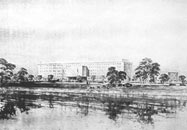
In addition, a senior Fund staff member noted that there were no restaurant or shopping facilities convenient to the proposed site. As well, the Fund’s Deputy Managing Director had been given to understand that U.S. Treasury officials considered it "inadvisable" to proceed with the proposal at that time, given conditions prevailing as the result of the Korean war.
The Caravan article reflects that instead of having a headquarters with twice the floor space that they were then using, as well as a superbly situated 14 acres of land on which to expand, the two institutions ultimately paid many times the $1.9 million that the Gas Company had asked in order to accommodate more staff for the organizations’ increasing activities. A mere 4 acres of the gas works property was sold a few years later for double the price available to the Fund and the Bank for the entire property.
And what ultimately happened to that 14 acre tract? The Kennedy Center now occupies the southern portion, and the Watergate apartment complex occupies the northern part.